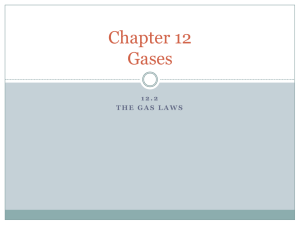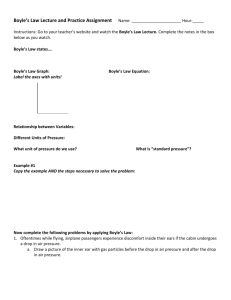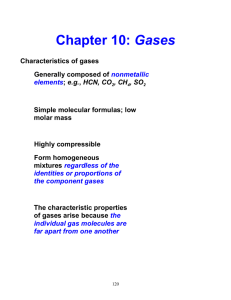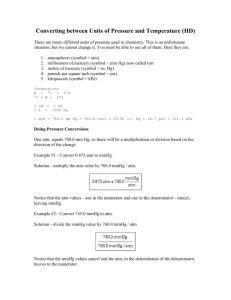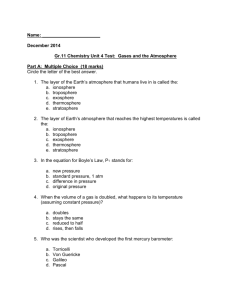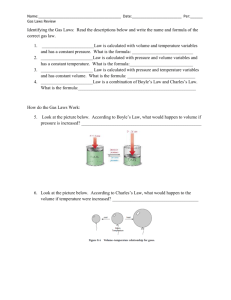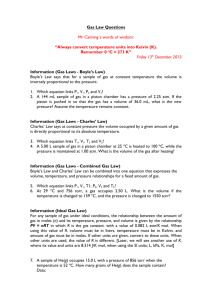CP Chem Unit 10 Gases
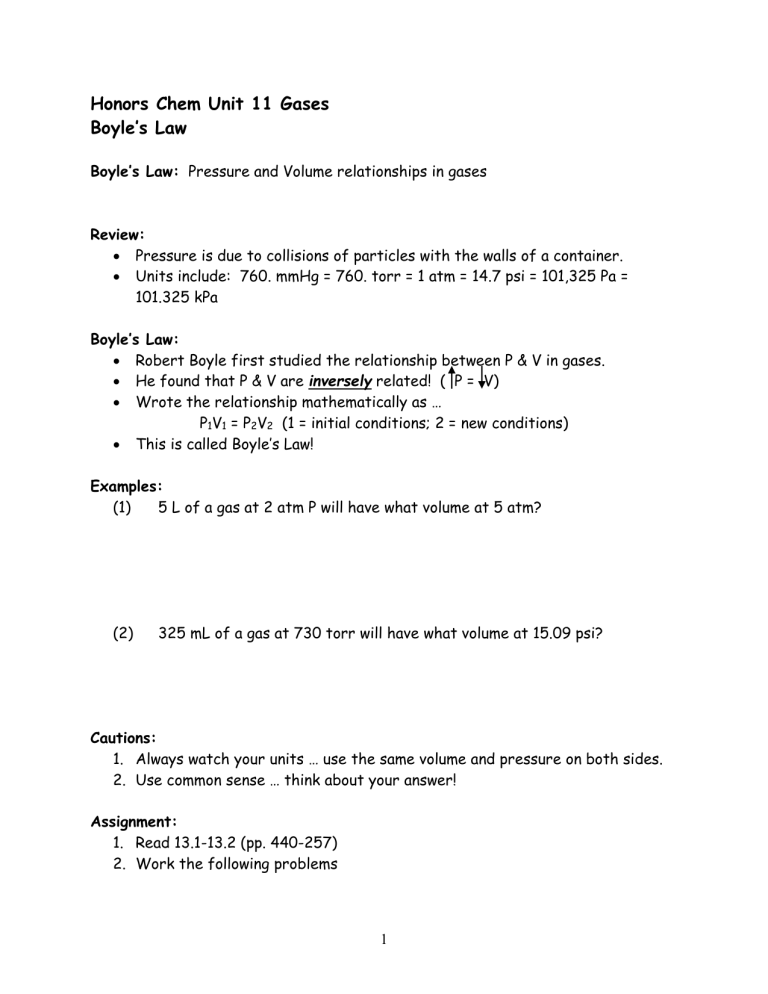
Honors Chem Unit 11 Gases
Boyle’s Law
Boyle’s Law: Pressure and Volume relationships in gases
Review:
Pressure is due to collisions of particles with the walls of a container.
Units include: 760. mmHg = 760. torr = 1 atm = 14.7 psi = 101,325 Pa =
101.325 kPa
Boyle’s Law:
Robert Boyle first studied the relationship between P & V in gases.
He found that P & V are inversely related! ( P = V)
Wrote the relationship mathematically as …
P
1
V
1
= P
2
V
2
(1 = initial conditions; 2 = new conditions)
This is called Boyle’s Law!
Examples:
(1) 5 L of a gas at 2 atm P will have what volume at 5 atm?
(2) 325 mL of a gas at 730 torr will have what volume at 15.09 psi?
Cautions:
1.
Always watch your units … use the same volume and pressure on both sides.
2.
Use common sense … think about your answer!
Assignment:
1.
Read 13.1-13.2 (pp. 440-257)
2.
Work the following problems
1
Problems:
1.
Synthetic diamonds can be manufactured at pressures of 6.00 X 10 4 atm. If a chemist took 2.00 L of gas at 1.00 atm and compressed it to a pressure of
6.00 X 10 4 atm, what would the volume of that gas be?
2.
Atmospheric pressure on the peak of Mt. Everest can be as low as 150 mmHg, which is why climbers need to bring oxygen tanks for the last part of the climb. If the climbers carry 10.0 L tanks with an internal gas pressure of 3.04 X 10 4 mmHg, what will be the volume of the gas when it is released from the tanks?
3.
An experimental research submarine with a volume of 15,000 L has an internal pressure of 1.2 atm. If the submarine ruptures while underwater at a pressure of 250 atm and the gas is released, how large a bubble will form?
4.
In a thermonuclear device, the pressure of 0.50 L of gas within the bomb casing reaches 4.0 X 10 6 atm. When the bomb casing is destroyed by the explosion, the gas is released into the atmosphere where it reaches a pressure of 1.00 atm. What is the volume of the gas after the explosion?
2
